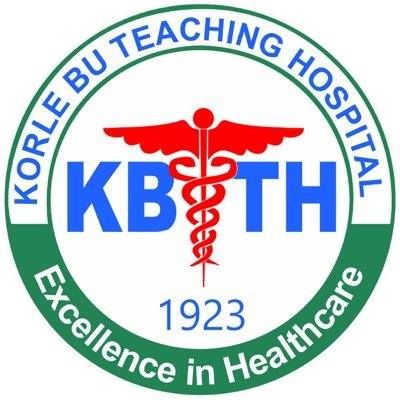Request Demo
Last update 08 May 2025

Korle Bu Teaching Hospital
Last update 08 May 2025
Overview
Related
18
Clinical Trials associated with Korle Bu Teaching HospitalNCT06937580
Enhancing the Survival of Low Birth Weight Infants in Low Resource Settings Using an Implementation Science Approach
Kangaroo Care, which includes skin-to-skin contact, exclusive breastfeeding, and timely follow-up, is a proven method to reduce neonatal morbidity and mortality in low-resource settings where the risks of prematurity, neonatal hypothermia, and neonatal mortality are high. However, numerous challenges such as inadequate knowledge, financial constraints, cultural norms, stigma, and limited social support impede its effective practice among mothers of low birthweight infants. To address these barriers, the intervention consists of informational, emotional and motivational support from trained peers and a box with warmth-related items to support the adoption and sustainment of Kangaroo Care at home. The investigators will enroll 328 mothers of low birthweight infants, who intend to initiate Kangaroo Care at two tertiary hospitals in Ghana, in a prospective randomized controlled trial. The trial aims to evaluate the effectiveness of the intervention in increasing exclusive breastfeeding rates and the duration of skin-to-skin contact at 7 and 28 days post-hospital discharge. Mothers in the control group will receive the standard of care, which consists of one counseling session on Kangaroo Care before discharge and a follow-up phone call after discharge. In addition to the standard of care, mothers in the intervention group will receive five one-on-one peer support sessions over one month, along with a box containing a hat, socks, a specialized wrap to support skin-to-skin contact, soap for hand hygiene, and a temperature monitoring device that alerts mothers if their infant becomes hypothermic. Using surveys, outcome data will be collected from both study groups at enrollment in the hospital, and at 7 and 28 days after discharge at participants' homes. Additionally, in-depth interviews will be conducted with 10-15 mothers from the intervention group, 10-15 healthcare workers, and all six peer supporters delivering the intervention. These interviews will explore the implementation of the intervention and contextualize barriers and facilitators from the perspectives of different stakeholders.
Start Date01 May 2025 |
Sponsor / Collaborator |
NCT06632288
Family Caregiver Participation in Hospital Care in Ghana: a Mixed Methods Study
This mixed methods study aims to understand family care participation in the adult medicine wards of Korle Bu Teaching Hospital, Ghana. The main questions it aims to answer, from the perspective of the patient, family caregiver, nurse, doctor, ward assistant, and hospital administrator, are:
1. What is the role of the family caregiver in hospital care?
2. What is the perceived effect of family participation in hospital care?
3. What are the barriers and facilitators experienced in family participation?
4. What are suggestions for family participation interventions?
These questions will be answered with three study arms:
1. A prospective observational cohort (population: patients and family caregivers)
2. A time and motion study (population: nurses and doctors)
3. Interviews and focus group discussions (population: patients, family caregivers, nurses, doctors, ward assistants, and hospital administrators)
1. What is the role of the family caregiver in hospital care?
2. What is the perceived effect of family participation in hospital care?
3. What are the barriers and facilitators experienced in family participation?
4. What are suggestions for family participation interventions?
These questions will be answered with three study arms:
1. A prospective observational cohort (population: patients and family caregivers)
2. A time and motion study (population: nurses and doctors)
3. Interviews and focus group discussions (population: patients, family caregivers, nurses, doctors, ward assistants, and hospital administrators)
Start Date12 Feb 2024 |
Sponsor / Collaborator |
NCT05444504
Effectiveness and Acceptability of Two Insertable Device Models for Non-surgical Management of Obstetric Fistula in Ghana, Kenya, and Uganda: a Randomized Crossover Trial
The investigators propose a clinical trial and nested qualitative study to 1) quantify the effectiveness of an insertable vaginal cup to manage fistula urinary incontinence, 2) examine user and implementer acceptability, and 3) quantify fistula management cost. Two intervention models will be compared among women awaiting fistula surgery or whose surgery was unsuccessful: 1) a vaginal cup ('cup'), and 2) the cup attached via rubber tubing to a leg-secured urine collection bag ('cup+') for greater urine holding capacity.
Start Date15 Apr 2023 |
Sponsor / Collaborator |
100 Clinical Results associated with Korle Bu Teaching Hospital
Login to view more data
0 Patents (Medical) associated with Korle Bu Teaching Hospital
Login to view more data
1,706
Literatures (Medical) associated with Korle Bu Teaching Hospital01 Dec 2025·Child's Nervous System
Management of pediatric quadrigeminal arachnoid cysts: a systematic review and illustrative case report
Review
Author: Sekyere, Nana A B O ; Osei, Emmanuel K Adjei ; Totimeh, Teddy ; Darko, Kwadwo ; Limann, Bernice ; Tenkorang, Pearl ; Ogunfolaji, Oluruntoba ; O'Leary, Sean ; Boateng, Maame A D ; Barrie, Umaru
01 Dec 2025·Child's Nervous System
A retrospective outpatient department-based study of the pattern of first-visit pediatric neurosurgical disorders: a 6-year single-center experience in Ghana
Article
Author: Bankah, Patrick ; Darko, Kwadwo ; Limann, Bernice ; Haizel-Cobbina, Joseline ; Banson, Mabel
01 Jul 2025·Human Genetics and Genomics Advances
Multiple molecular diagnoses identified through genome sequencing in individuals with suspected rare disease
Article
Author: Soler-Alfonso, Claudia ; Allotey, Felix ; Velasco, Danita ; Rajkumar, Revathi ; Gibson, Kate ; Naa Adjeley Adjetey, Naomi Dianne ; Sirchia, Fabio ; Makay, Prince ; Vance, Gail ; Pivnick, Eniko ; Duenas-Roque, Milagros M ; Bosfield, Kerri ; Jayakar, Parul ; Malhotra, Alka ; Coffey, Alison J ; Vanderver, Adeline ; Mubungu, Gerrye ; Shinawi, Marwan ; Masser-Frye, Diane ; Marcuccilli, Charles ; Adjeman, Josephine ; Manassero, Gioconda ; Casas, Kari ; Arsov, Todor ; Lumaka, Aimé ; Perry, Denise L ; Cornejo-Olivas, Mario ; Taft, Ryan J ; Brew, Yvonne ; Basel, Donald ; Marbell-Wilson, Marilyn ; Freed, Abbey ; Davis-Keppen, Laura ; Ngole, Mamy ; Vaux, Keith ; Kesari, Akanchha ; Serize, Arturo ; Perez, Jorge ; McCarrier, Julie ; Badoe, Ebenezer Vincent ; Maier, Ursula ; Thompson, Lauren ; Aglobitse, Sharron ; Ashong, Joyce ; Pena Salguero, Hildegard ; Mills, Hannah-Sharon ; Montoya, Jeny Balazar ; Taylor, Alan ; Wiafe, Samuel ; Kawome, Martina ; Jones, Marilyn C ; Brown, Chester ; Thorpe, Erin
1
News (Medical) associated with Korle Bu Teaching Hospital03 Mar 2023
Researchers have successfully predicted whether children have anemia using only a set of smartphone images.
Researchers at UCL and University of Ghana have successfully predicted whether children have anaemia using only a set of smartphone images.
The study, published in PLOS ONE, brought together researchers and clinicians at UCL Engineering, UCLH and Korle Bu Teaching Hospital, Ghana to investigate a new non-invasive diagnostic technique using smartphone photographs of the eye and face.
The advance could make anaemia screening more widely available for children in Ghana (and other low- and middle-income countries) where there are high rates of the condition due to iron deficiency, as the screening tool is much cheaper than existing options and delivers results in one sitting.
The paper builds on previous successful research undertaken by the same team exploring use of an app – neoSCB - to detect jaundice in newborn babies.
Anaemia is a condition causing a reduced concentration of haemoglobin in the blood, which means oxygen is not transported efficiently around the body.
It affects two billion people globally and can have a significant impact on developmental outcomes in children, increasing their susceptibility to infectious diseases and impairing their cognitive development.
The most common cause of anaemia globally is iron deficiency, but other conditions such as blood loss, malaria and sickle-cell disease also contribute.
First author, PhD candidate Thomas Wemyss (UCL Medical Physics & Biomedical Engineering) said: “Smartphones are globally popular, but research using smartphone imaging to diagnose diseases shows a general trend of experiencing difficulty when transferring results to different groups of people.
“We are excited to see these promising results in a group which is often underrepresented in research into smartphone diagnostics. An affordable and reliable technique to screen for anaemia using a smartphone could drive long-term improvements in quality of life for a large amount of people.”
Traditionally, diagnosis of anaemia requires blood samples to be taken, which can be costly for patients and healthcare systems. It can create inequalities related to the expense of travelling to hospital for a blood test. Often families need to make two trips, to have a blood sample taken and then to collect their results, due to samples being transported between the clinic and the laboratory for analysis.
In the 1980s a handheld device, the HemoCue, was developed to provide more immediate results, but this carries significant upfront and ongoing costs, as well as still needing a finger-prick blood sample.
The researchers knew that haemoglobin has a very characteristic colour due to the way it absorbs light, so aimed to develop a procedure to take smartphone photographs and use them to predict whether anaemia is present.
They analysed photos taken from 43 children aged under four who were recruited to take part in the study in 2018. The images were of three regions where minimal skin pigmentation occurs in the body (the white of the eye, the lower lip and the lower eyelid).
The team found that when these were evaluated together to predict blood haemoglobin concentration, they were able to successfully detect all cases of individuals with the most severe classification of anaemia, and to detect milder anaemia at rates which are likely to be clinically useful.
Principal investigator Dr Terence Leung (UCL Medical Physics & Biomedical Engineering) said: “Since 2018, we’ve been working with University of Ghana on affordable ways to improve healthcare using smartphones. Following our success in screening neonatal jaundice, we are so excited to see that the smartphone imaging technique can also apply to anaemia screening in young children and infants.”
Senior author Dr Judith Meek (UCLH) added: “Anaemia is a significant problem for infants, especially in low- and middle-income countries, and we hope this sort of technology will lead to earlier detection and treatment in the near future.”
The study was funded by the EPSRC via the UCL Global Challenges Research Fund and UCL Centre for Doctoral Training in Intelligent, Integrated Imaging in Healthcare.
100 Deals associated with Korle Bu Teaching Hospital
Login to view more data
100 Translational Medicine associated with Korle Bu Teaching Hospital
Login to view more data
Corporation Tree
Boost your research with our corporation tree data.
login
or

Pipeline
Pipeline Snapshot as of 21 Dec 2025
No data posted
Login to keep update
Deal
Boost your decision using our deal data.
login
or

Translational Medicine
Boost your research with our translational medicine data.
login
or

Profit
Explore the financial positions of over 360K organizations with Synapse.
login
or

Grant & Funding(NIH)
Access more than 2 million grant and funding information to elevate your research journey.
login
or

Investment
Gain insights on the latest company investments from start-ups to established corporations.
login
or

Financing
Unearth financing trends to validate and advance investment opportunities.
login
or

AI Agents Built for Biopharma Breakthroughs
Accelerate discovery. Empower decisions. Transform outcomes.
Get started for free today!
Accelerate Strategic R&D decision making with Synapse, PatSnap’s AI-powered Connected Innovation Intelligence Platform Built for Life Sciences Professionals.
Start your data trial now!
Synapse data is also accessible to external entities via APIs or data packages. Empower better decisions with the latest in pharmaceutical intelligence.
Bio
Bio Sequences Search & Analysis
Sign up for free
Chemical
Chemical Structures Search & Analysis
Sign up for free

